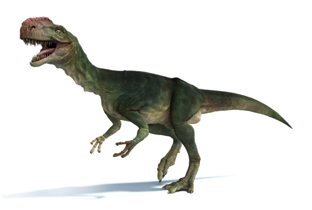
Monolophosaurus Dinosaur is a genus of theropod dinosaur that lived during the Middle Jurassic period, approximately 170 to 174 million years ago. It was discovered in the Shishugou Formation of China and belongs to the family Dilophosauridae. The name "Monolophosaurus" means "single-crested lizard," referring to its distinctive cranial crest.
Monolophosaurus was a medium-sized carnivorous dinosaur, measuring around 6 to 7 meters (20 to 23 feet) in length and weighing about 500 to 1,000 kilograms (1,100 to 2,200 pounds). It had a slender and agile body, with long legs and a long, flexible tail that provided balance and stability during movement. One of the most notable features of Monolophosaurus is its unique crest on the top of its skull. The crest was a thin, elongated structure that ran from the snout to the back of the head.
Monolophosaurus Facts :
| Name: | Monolophosaurus Dinosaurs |
| Size: | 6 to 7 meters |
| Main Facts: | Monolophosaurus is a genus of theropod dinosaur that lived during the Middle Jurassic period, approximately 170 to 174 million years ago. |
Monolophosaurus had long, slender arms with three-fingered hands. Although its arms were relatively small compared to its body size, they were still functional and could have been used to grasp prey or aid in balance while running. Its hind legs were powerful and built for agility and speed.
As a carnivorous dinosaur, Monolophosaurus was an apex predator, preying on other smaller dinosaurs and possibly small mammals. It was likely an active hunter, using its sharp teeth and agile body to pursue and capture its prey. Its binocular vision and sense of smell would have been crucial for locating and tracking targets. The discovery of Monolophosaurus has provided valuable insights into the evolution and diversity of theropod dinosaurs during the Jurassic period. Its unique cranial crest distinguishes it from other theropods, and further study of its anatomy and behavior helps scientists understand the ecological roles and adaptations of these ancient predators.